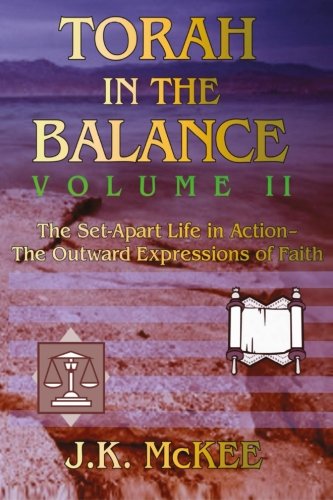Torah In the Balance, Volume II: The Set-Apart Life in Action – The Outward Expressions of Faith
The views expressed and practices witnessed, regarding the place of God’s Torah in the life of contemporary Messianic Believers, are more likely to cause tension for far too many people—than facilitate any sense of spiritual fulfillment, much less relief. There is little doubting the fact that as a widely mixed group of people, from both
The views expressed and practices witnessed, regarding the place of God’s Torah in the life of contemporary Messianic Believers, are more likely to cause tension for far too many people—than facilitate any sense of spiritual fulfillment, much less relief. There is little doubting the fact that as a widely mixed group of people, from both Jewish and Christian backgrounds, that each man and woman within the Messianic community brings both positive and negative things into the assembly. When it comes to the issue of Torah observance, the spectrum of views and practices has been too often polarized between an Orthodox Jewish, hyper-traditional style—and some anti-traditional, quasi-Karaite style. Much of this has come about because there is an entire array of issues, which need some preliminary handling, and which has yet to receive it. Torah In the Balance, Volume II is a book which recognizes that the Torah does regulate many physical actions to be performed by God’s people. Faith in the Lord is hardly just a series of abstract mental beliefs or doctrines; it is also something which is to be demonstrated in concrete works. But when we consider the importance of external works as a manifestation of our trust in Yeshua the Messiah (Jesus Christ), what is some of the variance seen in on-the-ground Messianic settings? How do people keep the seventh-day Sabbath/Shabbat, eat kosher, or sanctify the appointed times? What about our physical dress and appearance? What about issues like circumcision or water immersion (baptism)? What about various religious symbols like the cross or Star of David? Even when Messianic people have been theologically convinced that Moses’ Teaching remains valid instruction for God’s people today, there is going to be variance, and even internal disagreement, about how it is to be implemented for those living in the Twenty-First Century. This publication has been long anticipated in addressing some of the finer-issues of Torah observance witnessed within the Messianic movement. It takes into consideration the theological and spiritual developments of the 2000s-2010s to be sure, but more importantly tries to present the necessary third way which must emerge for our Torah observance. This is crucial, as we steadily develop into a force of holiness and righteousness in the world, and strive to commit ourselves to further obedience.







Comments